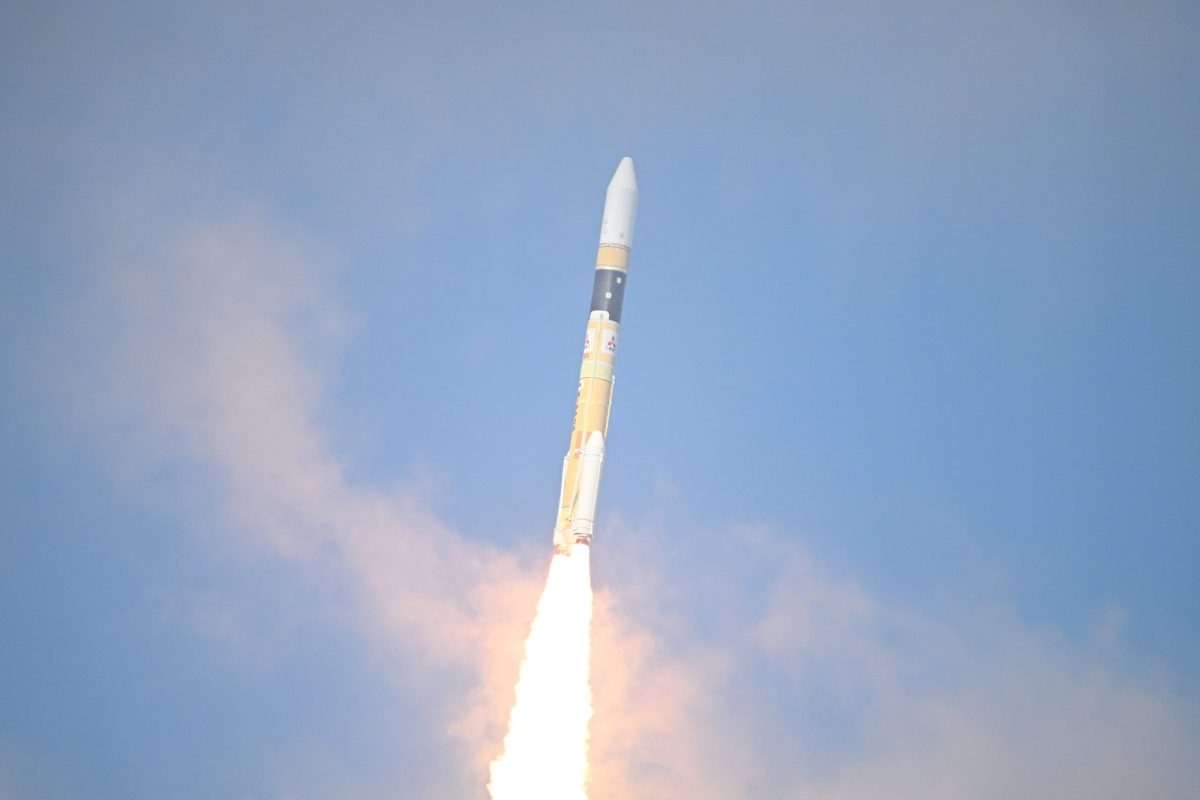HELSINKI — Japan launched the classified IGS-Radar 8 satellite early Thursday with the second-to-last H-2A rocket.
A Mitsubishi Heavy Industries (MHI) H-2A rocket in a figuration with a pair of SRB-A3 solid boosters lifted off from Tanegashima Space Center in southwestern Japan at 1:24 a.m. Eastern (0524 UTC) Sept. 26. MHI confirmed separation of the IGS-Radar 8 reconnaissance satellite from the launch vehicle around two hours after launch.
Information Gathering Satellite (IGS) Radar 8 was launched into sun-synchronous orbit (SSO). Japan’s Cabinet Satellite Information Center will operate the satellite. The IGS series includes both optical and radar satellites. Radar 8 will gather data for intelligence purposes and environmental and natural disaster monitoring, as with earlier IGS satellites.
The H-2A debuted in 2001 and has flown 49 times with a single failure, suffered in 2003, resulting in the loss of the IGS-2 satellite. The rocket’s 50th launch will be its last. The final H-2A core stage is now completed and is scheduled for shipment to the Tanegashima Space Center, MHI announced in a Sept. 25 statement. That launch, expected in late 2024, will carry the Global Observing SATellite for Greenhouse gasses and Water cycle (GOSAT-GW) satellite.
The H3 will succeed the H-2A. The new generation H3 had a troubled start, with its first flight, in March 2023 suffering a second stage engine failure. This resulted in the loss of the ALOS-3 payload. The failure led the Japan Aerospace Exploration Agency (JAXA) postponing a mission to collect samples from the Martian moon Phobos from 2024 to 2026.
Since then, the rocket’s fortunes have improved. The H3 has since flown successfully twice, in February and July this year.
The fourth launch of the new rocket is currently scheduled for Oct. 20, according to JAXA, with a launch window running through Nov. 30. The launch will carry the X-band defense communication satellite-3. Earlier this month, Eutelsat signed a multi-launch agreement for multiple H3 rockets from 2027.
JAXA is working on plans for a new, large and reusable launch vehicle for its future space transportation plans. The agency is considering liquid methane as the fuel for the rocket.
Thursday’s launch was Japan’s fifth in 2024. Prior launches were the H-2A launch of IGS-Optical 8, the H3 test flight number 2 and H3 flight three, carrying ALOS-4. The privately developed Japanese Kairos rocket exploded seconds after liftoff in March.Other Japanese spaceflight activities include the Active Debris Removal by Astroscale-Japan (ADRAS-J), launched on a Falcon 9 in February, and launch of the StriX radar satellites for Japanese company Synspective on Rocket Lab Electron rockets. A Falcon 9 also launched the joint ESA-JAXA EarthCARE mission.
